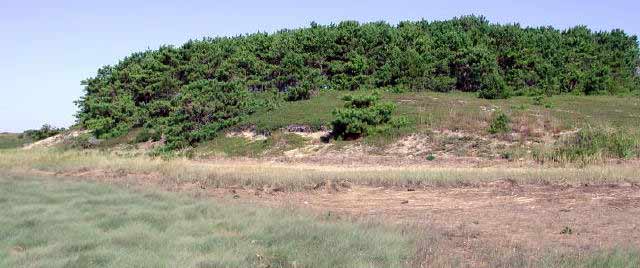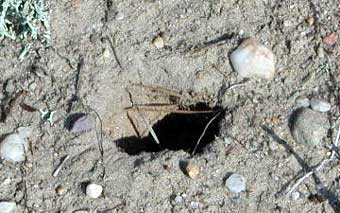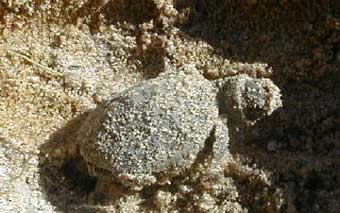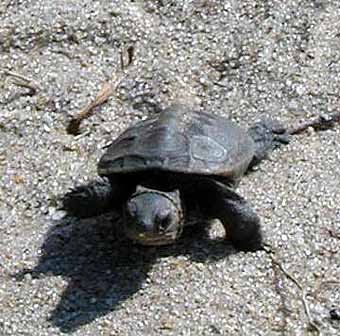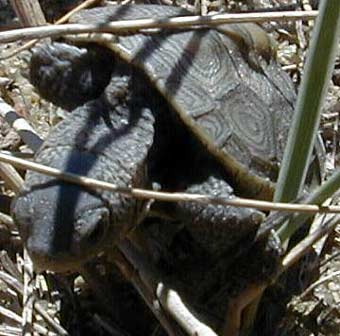Living Up to One’s Name — 30 August 2001When your name is Turtle Point, and you’re located within the most critical diamondback habitat in Wellfleet Bay, and you’ve been designated a terrapin nesting sanctuary, the bars have been set pretty high to meet the standards your name engenders. Yet, year after year, Turtle Point exceeds those expectations. The year 2001 is no exception to this rule. With the season only six days old, Turtle Point continues to generate more than 60% of all emerged hatchlings.
This morning one of our summer Terrapin Field Schoolers (See Terrapin Field School Wraps Up, 29 June 2001), Barbara Brennessel, a professor at Wheaton College, returned to the Land of Ooze to “experience the full cycle.” She and her colleagues had observed turtle nesting, had relocated vulnerable clutches, and had protected nests from predation. Now she had the chance to see the fruits of all that hard work. Near the tip of Turtle Point (to the right of the panoramic), the neck of Nest 172 had completely collapsed after serving as an escape route for several hatchlings.
| |||||||||||||
